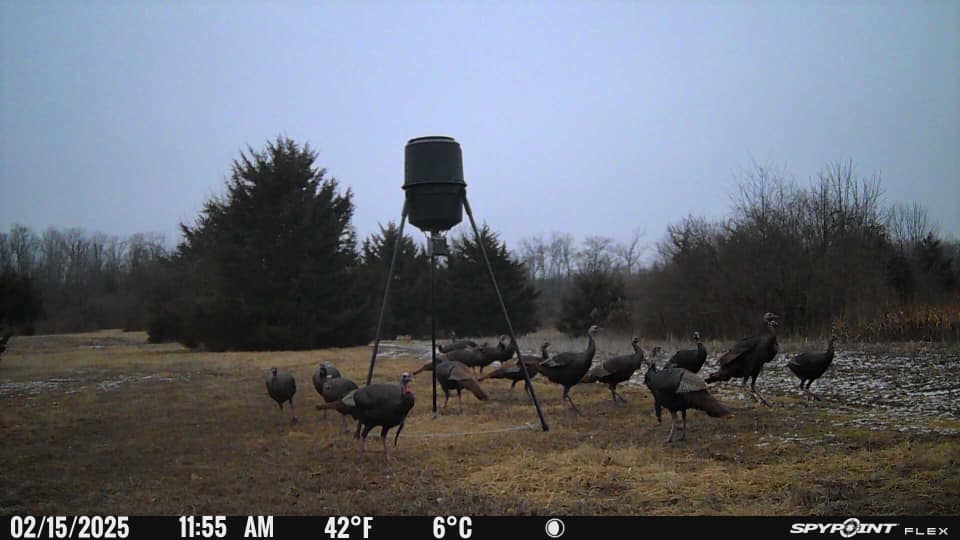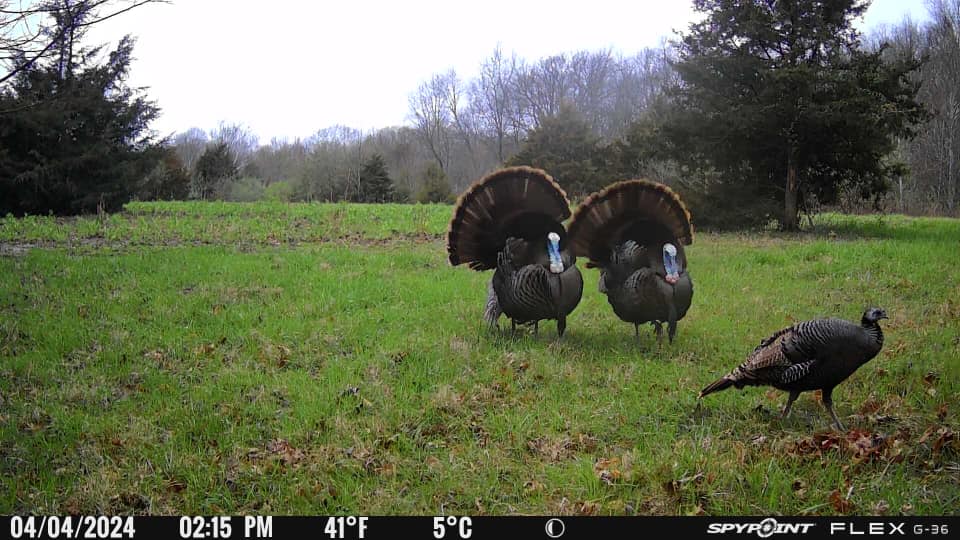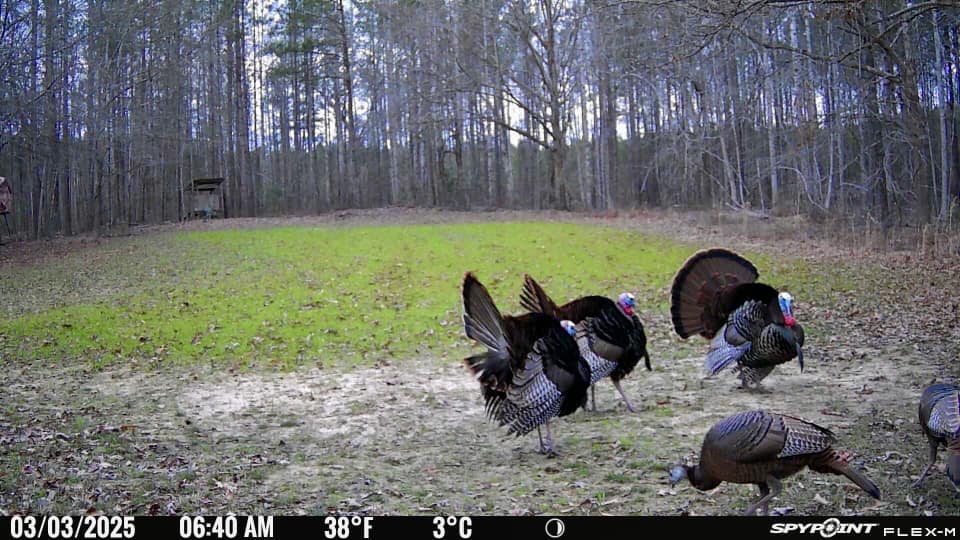
Trail cameras are a game-changer for deer hunting, but many turkey hunters overlook their value. When used wisely, they can offer important insights into turkey movement and behavior. This gives you an advantage for turkey hunting season.
Why Use Trail Cameras for Turkey Hunting?
Trail cameras offer several advantages for spring turkey hunting. They help hunters track turkey activity, identify prime hunting locations, and even monitor the breeding cycle. By observing how turkeys group up, strut, and move through an area, you can plan your hunts more effectively.
Another major benefit is taking an inventory of the turkey population on your property. Trail cameras help you spot individual gobblers. You can tell them apart by their beard length, spur size, and feather color. Plus, they help pinpoint where turkeys spend the most time, setting you up for success on opening day.
Want to maximize your chances? Set your trail cameras in these 10 key locations to capture the best turkey hunting intel.

1. Landing Zones
Knowing where turkeys roost is crucial, but understanding where they land after fly-down is even better. Turkeys don’t drop straight down—they glide to open landing zones nearby. Place your cameras in these spots to catch early-morning movement.
2. Strut Zones
Gobblers have preferred spots where they strut and display during the day. These areas are often shaded and provide good visibility. Prime locations include benches, open pine stands, and cedar thickets. Setting up trail cameras in these spots can reveal turkey patterns during peak strutting hours.
3. Pinch Points
Like deer, turkeys often follow paths of least resistance. Pinch points—such as narrow ridges, creek crossings, and gaps between thick cover—act as natural funnels. Positioning cameras in these locations can help you track turkey movement.
4. Fence Gaps
Turkeys prefer easy routes, and fence gaps provide just that. These overlooked pinch points are high-traffic areas that are ideal for camera placement.
5. Logging Roads
Turkeys frequently travel, feed, and strut along logging roads. In areas with low hunting pressure, these roads can be turkey highways. However, in high-pressure zones, birds may avoid them. Use trail cameras to determine how turkeys are using these paths in your area.

6. Turkey Sign Hotspots
If you find turkey droppings, feathers, or tracks, it’s a sign of frequent activity. Set up a camera nearby to see which birds are passing through and when.
7. Inside Field Corners
Both deer and turkeys favor inside corners along field edges. These spots provide cover while allowing easy access to feeding areas. Cameras placed here can reveal turkey travel routes and feeding times.
8. Food Sources
Turkeys love confined food sources like chufa plots, clover fields, and freshly tilled ground. These areas are prime spots for morning and afternoon feeding activity. Placing trail cameras near feeding sites can help you pattern birds for a well-timed hunt.
9. Travel Routes
Turkeys follow established travel routes between roosting, feeding, and strutting areas. Well-worn paths in the woods or through fields make excellent locations for trail cameras. Capturing midday movement can be especially useful for finding birds when other hunters have packed up for the day.
10. Past Kill Sites
If you’ve tagged turkeys in a specific spot before, there’s a good chance it will produce again. Use trail cameras to monitor these areas and confirm if turkeys still frequent them.
Bonus Tip: Hang Trail Cameras Low
One common mistake is placing cameras too high, which results in missed shots or only capturing turkey heads. For the best results, position your cameras 1 to 2 feet off the ground. This ensures you capture full-body images and get the best intel for your hunt.

Final Thoughts
Trail cameras can be just as valuable for turkey hunting as they are for deer season. By strategically placing cameras in high-traffic areas, you’ll gain crucial insights into turkey movement and behavior. Use these turkey hunting tips to make the most of your cameras and improve your odds this season!



